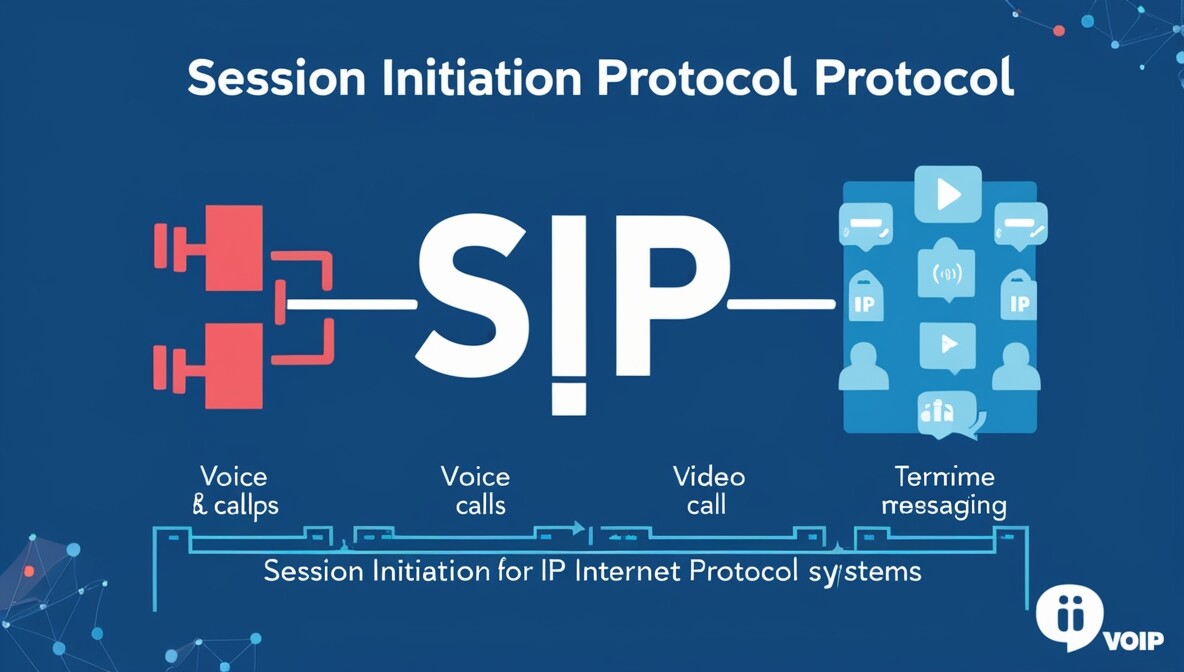Voice over Internet Protocol (VoIP) is a technology that allows users to make voice calls over the Internet. It also enables multimedia calls. This is instead of using traditional telephone lines. VoIP converts voice signals into digital data packets and transmits them over IP networks, enabling more flexible and cost-effective communication.
What is VoIP Used For?
VoIP is widely used for:
- Voice Calls: To make local, national, and international phone calls over the Internet.
- Video Calls and Conferencing: For face-to-face virtual meetings.
- Unified Communication: Integrating voice, video, messaging, and collaboration tools into a single platform.
- Call Center Solutions: Managing inbound and outbound customer communications efficiently.
- Remote Work Communication: Offering flexibility to businesses and individuals working from different locations.
Why is VoIP Important?
The important thing that you should know:
- Cost Savings: VoIP calls, including international ones, are often significantly cheaper than traditional telephony.
- Flexibility: Can be used on various devices like IP phones, computers, and mobile devices.
- Scalability: Easy to expand without additional infrastructure.
- Advanced Features: Includes voicemail, call forwarding, video conferencing, and analytics.
- Portability: Use the same VoIP number anywhere with an internet connection.

How Does VoIP Work?
VoIP converts analog audio signals into digital data packets and transmits them over IP networks. Here’s a step-by-step explanation:
- Signal Conversion:
- Your voice is converted from analog to digital format by a device like an IP phone or softphone (VoIP application).
- Packetization:
- The digital voice data is split into packets, each containing a piece of the conversation.
- Transmission:
- Packets are sent over the internet using protocols like SIP (Session Initiation Protocol) or H.323.
- Decoding:
- On the recipient’s end, packets are reassembled and converted back into analog audio.
Ports Used in VoIP
These are the ports that we used in VoIP:
- Signaling Ports:
- Port 5060: Used for SIP over UDP/TCP for signaling.
- Port 5061: Used for SIP over TLS (encrypted signaling).
- Media Ports:
- RTP (Real-time Transport Protocol) uses dynamic port ranges, typically 16384-32767, for transmitting audio and video streams.
- Other Protocols:
- Port 1719/1720: Used by H.323 protocol.
- Port 3478/5349: Used by STUN (Session Traversal Utilities for NAT) for NAT traversal.

Examples of VoIP in Action
- Business Communication:
- A company uses a VoIP PBX system to manage internal and external calls, reducing phone bills and improving productivity.
- Video Conferencing:
- Teams use platforms like Zoom, Microsoft Teams, or Google Meet, which rely on VoIP to transmit voice and video.
- Mobile Apps:
- Applications like WhatsApp, Skype, and Viber utilize VoIP for free internet-based calls and messages.
Functions of VoIP
- Cost-Effective Calling: Facilitates affordable international and long-distance calls.
- Mobility and Flexibility: Allows users to make and receive calls on various devices using a single number.
- Advanced Features: Includes auto-attendant, voicemail-to-email, and call analytics.
- Scalability: Easily expand or reduce services based on requirements.
- Integration: Integrates with CRM systems, emails, and other business tools.

VoIP has revolutionized the way we communicate by leveraging the internet for voice and multimedia transmission. It offers numerous advantages, such as cost savings and advanced features. Additionally, its portability makes it an ideal choice for individuals and businesses.
By understanding how VoIP works, its ports, and its use cases, you gain valuable insights. These insights allow you to make informed decisions. You can deploy this technology to enhance communication efficiency. VoIP is a transformative solution for modern communication. Whether you’re a business looking to cut costs or you are an individual wanting seamless connectivity, VoIP provides significant benefits. Learn all the other network protocols…
When We Use VoIP in a Network:
- Voice Communication Over the Internet
- VoIP is used to make phone calls using an internet connection instead of traditional telephone lines.
- Business Phone Systems (IP Telephony)
- Companies use VoIP to connect desk phones, softphones, and mobile apps through a central PBX system. This reduces costs and increases flexibility.
- Video Calls and Conferencing
- Many video conferencing platforms (Zoom, Microsoft Teams, Cisco Webex, etc.) use VoIP to transmit both audio and video over IP networks.
- Remote Work and Mobility
- Employees working from home or traveling can connect to their office phone system using VoIP apps on laptops or smartphones.
- Call Centers and Customer Support
- Call centers rely on VoIP to handle large volumes of inbound and outbound calls efficiently, often integrated with CRM systems.
- Unified Communications
- VoIP supports integration with messaging, email, and collaboration tools, creating a single communication platform.
- Cost Savings on International Calls
- Individuals and businesses use VoIP to avoid high charges for long-distance or international phone calls.
VoIP is used whenever voice, video, or multimedia communication is transmitted over IP networks (LAN, WAN, or the internet). It’s widely used in businesses, call centers, remote work, and everyday apps like WhatsApp, Skype, and Zoom.




